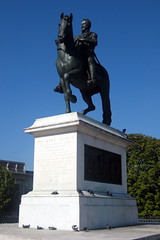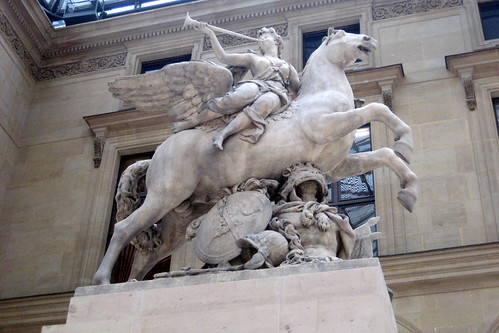The small one is a generally called a square, the middle-sized one is generally called a garden and the big-sized one is generally called a park. There are also 2 woodlands called ''bois'' (Bois de boulogne and Bois de vincennes).
The Bois de Vincennes (995ha) and Bois de Boulogne (846ha) are the largest green spaces of Paris. The first one is in the 12th arrondissement of Paris whereas the Bois de Boulogne is in the 16th district.
Regarding the Paris parks and gardens, the Parc de la Villette is the largest, following by the Jardin des Tuileries, the Parc des Buttes-Chaumont and the Jardin du Luxembourg.
The Paris parks and gardens are resorts and relaxation for Parisian and visitors who wait for sunny days to sit and socialize on the green grasses or on the benches.
Below is a list, by Paris districts, of some most important Paris parks and gardens as well as squares :
1st arrondissement of Paris
* Jardin des Halles
* Jardin du Palais Royal
* Square du Vert-Galant
* Square de la place Dauphine
* Jardin des Tuileries
3rd arrondissement of Paris
* Square du Temple
4th arrondissement of Paris
* Square de la Tour Saint-Jacques
* Square Jean XXIII
* Square Louis XIII
5th arrondissement of Paris
* Square René-Viviani - Montebello
* Jardin des plantes
6th arrondissement of Paris
* Jardin du Luxembourg
7th arrondissement of Paris
* Esplanade des Invalides
* Parc du Champ-de-Mars
8th arrondissement of Paris
* Jardins des Champs-Elysées
* Parc Monceau
10th arrondissement of Paris
* Jardin Villemin
12th arrondissement of Paris
* Parc de Bercy
* Promenade plantée
* Bois de Vincennes
* Parc Floral
* Arboretum de l'Ecole Du Breuil
* Ecole du Breuil
* Jardin d'Agronomie Tropicale
* Jardin de Reuilly
13th arrondissement of Paris
* Parc de Choisy
* Jardins Abbé Pierre - Jardins des Grands Moulins
* Parc Kellermann
14th arrondissement of Paris
* Parc Montsouris
15th arrondissement of Paris
* Jardin Atlantique
* Parc Georges-Brassens
* Parc André-Citroën
* Parc Omnisport Suzanne Lenglen
16th arrondissement of Paris
* Parc Sainte-Périne
* Jardin d'acclimatation
* Pré-Catelan et jardin Shakespeare
* Jardin des serres d'Auteuil
* Bois de Boulogne
* Parc de Bagatelle
17th arrondissement of Paris
* Parc Clichy-Batignolles - Martin Luther King
* Square des Batignolles
18th arrondissement of Paris
* Jardins d'Eole
19th arrondissement of Paris
* Parc des Buttes-Chaumont
* Parc de la Butte-du-Chapeau-Rouge
* Parc de la Villette
* Jardin Serge Gainsbourg
20th arrondissement of Paris
* Parc de Belleville
Related articles to Paris parks and gardens
-Places to visit in Paris (districts 1-6)
-Places to visit in Paris (districts 7-13)
-Places to visit in Paris (districts 14-20)



















